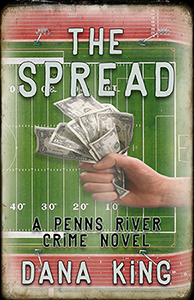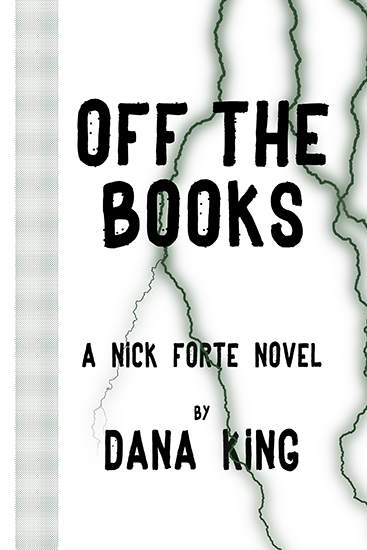I first met Weldon Burge at a Creatures, Crimes, and
Creativity conference several years ago, when the conference was still in the wilds
of Hunt Valley MD. After a few panels we noticed that, not only were we always
attending the same panels, we tended to end up with one of us sitting directly
behind the other. That led to conversation (“Are you stalking me?”) and
friendship. Getting to see Weldon is a highlight of every C3 I attend.
Weldon’s new book, Harvester
of Sorrow drops next week from Suspense Publishing, though that’s not
all he had going on, as the interview will show.
One Bite at a Time: Howdy, Weldon. It’s good to see
you here. What’s the skinny on Harvester of Sorrow?
Weldon Burge: Ah, the skinny. Harvester of Sorrow is about a dedicated and insightful police detective,
Ezekiel Marrs, who embarks on a race to solve a series of vicious crimes
involving murder, kidnapping, tainted cocaine, and voodoo. Marrs and his team of fellow officers must
confront two of the most vicious villains they have ever encountered.
The novel, published
by Suspense Publishing, is the first in a planned series of police procedurals.
I’ve written for Suspense Magazine for about a decade, mostly writing
author interviews. Submitting the book to Suspense Publishing, an imprint of
the magazine, made total sense.
I’ve always wanted
to write a police procedural, and I’ve always had an interest in voodoo.
Combining the two elements as a thriller was my objective when drafting the
book—which, by the way, took me more than a decade. Much of what I wrote never
made it into the book. Guess that’s common for many novelists.
OBAAT: It’s not unusual for thrillers to have
supernatural aspects; it is for procedurals. A high-concept description of HoS
could be “Law & Order meets Angel Heart.” How did this develop in your
mind?
WB: Well, I’m a big Ed McBain fan, and one of the
first McBain books I read was Ghosts. McBain handled the supernatural
elements well in that police procedural. Even Stephen King praised the novel. There
are other crime novels with supernatural aspects, but that’s the one that
immediately comes to mind. And I loved how McBain defined his characters
largely through dialogue. I attempted the same style with Harvester of
Sorrow.
Law & Order meets Angel Heart. Wow, I’m
honored, that’s a pretty accurate description of Harvester of Sorrow now
that you mention it. Well, I hope readers will make those comparisons as well. I’ve
always been a reader and writer of horror and suspense fiction, so the
storyline for the novel was something of a no-brainer for me. The two genres
are my playground. To be honest, the genres make for a superb marriage. So, I
played it that way as I wrote the book. And I’ve always thought horror and
humor are kissing cousins, so there’s a good deal of dark humor in the blend as
well. I hope readers will enjoy it.
OBAAT: The book spans eleven years; I’ve never had
the balls to have a story last longer than a few months. How did you keep your
threads together when skipping ahead?
WB: The beginning of Harvester of Sorrow takes
place in Port-au-Prince, Haiti, in 1982 and introduces the main villain, Edouard
LeBorg. His story over the following eleven-year time span is basically his
history, which is told as the novel’s story progresses. The core of the police
procedural elements take place in a six-month period in 1993. Juxtaposing the
two threads was relatively easy—I approached them as two stories that
complemented each other. The trick was sequencing them at best effect. I think the
strategy worked in the polished book.
OBAAT: You have multiple irons in the fire, as you’re
also the driving force behind Smart Rhino Publications. How did you get into
that, and how much of your time does it demand?
WB: I’ve always wanted to start a small, independent
publishing company that focuses on suspense and horror fiction. Beyond that, there
are two major reasons I launched Smart Rhino back in 2012.
First, I’m a huge fan of anthologies, like Dark Crimes,
Stalkers, Predators, Transgressions, and all those Alfred
Hitchcock anthos ages ago. My desire to publish an anthology led to the first Zippered
Flesh horror anthology. To date, we’ve published fifteen books, eight of
which were anthos.
Second, I enjoy collaborating with other writers, especially
talented writers who haven’t quite hit the limelight yet. I’m a
“pay-it-forward” guy. I appreciate the many folks who have supported me over
the years, and helping writers better their careers is a natural ambition of
mine because of it. Starting Smart Rhino Publications, especially with the
anthologies, provided an opportunity for me to develop venues for those authors.
I’ve worked with more than a hundred writers over the years. That means more to
me than you know!
The Smart Rhino projects demand a great deal of time. I
received 120+ submissions for the last anthology, with only twenty-four slots
available in the book. I read every story. I also edit and format each book. (I
do, however, rely on a cover artist, cover designer, and proofreader for each
book.) So, yep, time is always an issue. But I love doing it, so I make the
time.
OBAAT: Smart Rhino also recently published, Asinine
Assassins. Tell us a little about that one.
WB: That’s the third in the “Assassins” series of
anthologies Smart Rhino has published. The first two, Uncommon
Assassins and Insidious
Assassins, were straight-up suspense anthologies. Well, with a
smattering of dark humor. When pulling together Asinine Assassins, I
wanted to go full tilt into darkly humorous and tongue-in-cheek stories—weird
and yet suspenseful, even wacko and surreal tales. I mean, there are stories
about murderous otters, a vastly different take on Jack the Ripper, a vengeful
deer, and a female assassin who is far too hung up on fashion. And that’s just
a taste of the twenty-four stories in the collection. I don’t think there is
another anthology out there with a similar spirit and focus. It was the most
fun yet of the Smart Rhino anthologies I’ve pulled together and edited. The
writers took the theme and ran with it, and I’m deeply appreciative of their
diverse talents.
OBAAT: What’s up next, and what are you working on
now?
WB: I’m currently about one hundred pages into my
next novel, a paranormal mystery. (I guess I can’t get away from that
“supernatural” thing.) I’ve played with a dozen or more titles for the book,
but none have thrilled me. Regardless, I’m thinking this may be the first in
another series. We’ll see.
After that, I’ll turn to writing a sequel to Harvester of
Sorrow. The next book will have no supernatural elements at all and will
pick up where the other novel left off. I like that sense of continuity in a series,
and it allows for further character development. Referring again to Ed McBain,
his 87th Precinct series began in 1956 and ended in 2006—we’re
talking fifty-two books! The continuity he established with his host of
characters, over so many decades, was astounding. I hope, as I develop my
series, I can accomplish something similar.
Thanks, Dana!

